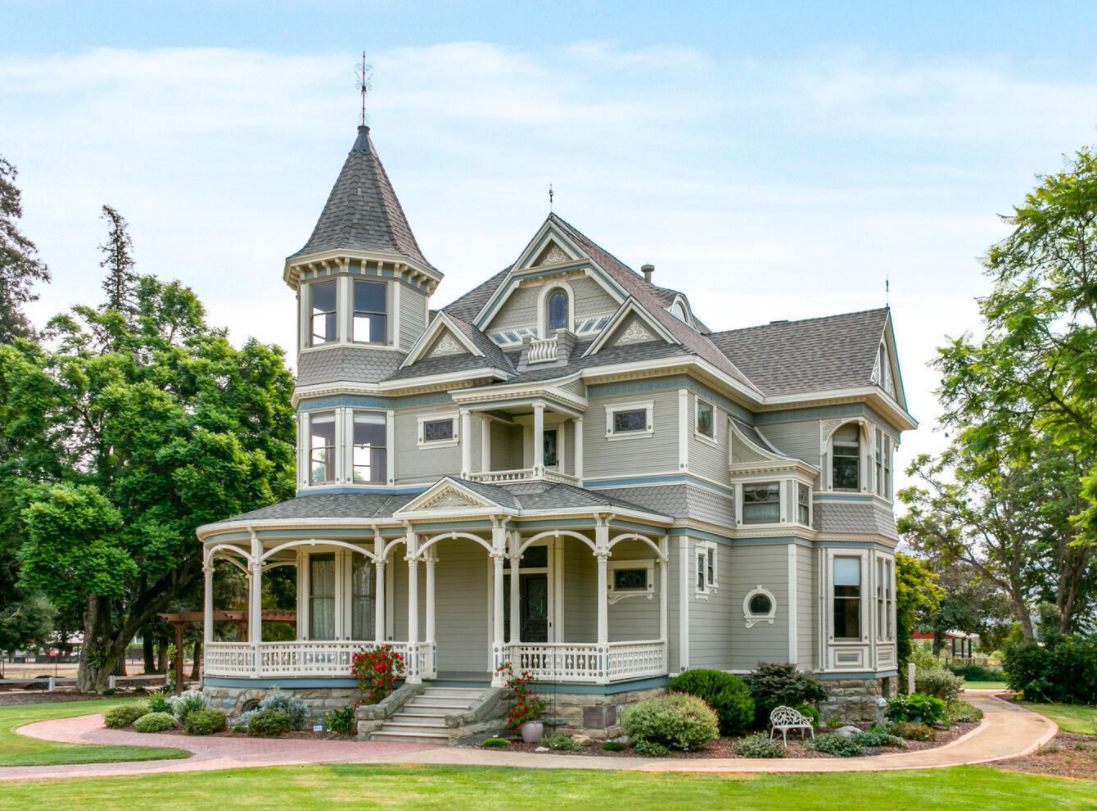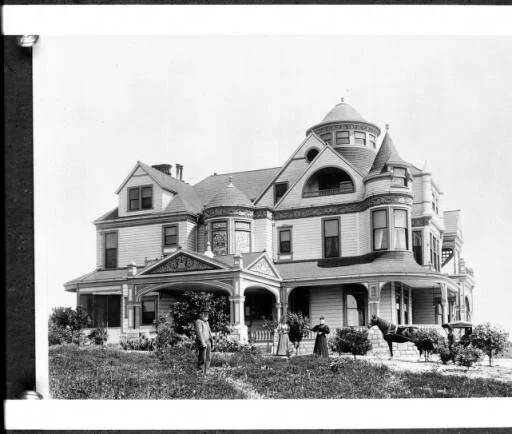BY MICHAEL ROBLETO
Real Estate Professional with Compass Pasadena. Specializing in the buying and selling of Pre-War, Historic and Architecturally significant homes and lofts in Altadena, Pasadena, Eagle Rock, Highland Park, Silverlake, Los Feliz and DTLA.
LA Architectural Spotlight: Victorian Style Guide & Victorian Homes for Sale
The History of the Victorian Era
who were the Victorian Builders in Southern California?
What are the The Details That Make a Victorian Unique?
how can I find victorian homes for sale?
Being a Realtor the specializes in older homes, I get the benefit of being inside a wide variety of architectural styles. The details of each of these time machines vary wildly but are all incredibly interesting. Through sharing the details of these styles, I hope that you get a better sense of the style you love or find a new style you perhaps weren’t as familiar with. This is part four of a twelve-part series. Subscribe for updates.
What Are the Origins of the Victorian Style?
The Victorian-style home is the first Southern California architectural style that was a means of wealth and not of necessity. Prior to the Victorian, the LA landscape of residential housing was made up of simpler farmhouses and adobe structures.
As the region grew in population and emigrated wealth, we see the first signs of housing for the well to do, and it was often in the Victorian style.
The Victorian-style home in Southern California was produced predominately during the years of 1880 until 1905 as this was the Victorian “era”. Therefore, most large homes built in this time period are technically Victorians.
As I have discussed in previous articles in this series, the population was booming in Southern California. In 1880, the LA County population was a mere 33,381 residents, by 1910 the population grew to 504,131. The boom in population produced a massive demand for housing, and for those well to do, they sought out large houses and because they were built in this time period, they are considered Victorian style.
It must have been quite the scene back then, imagine traveling through the developed parts of the region at this time, large lots of land with grand houses would have been the mainstay as suburban neighborhoods were just starting to take shape.
Where Can I Find Victorian Homes?
We know that Los Angeles grew from what is now Downtown LA and radiated out. Places like Angelino Heights and Echo Park are neighborhoods where most Victorian homes can be found today. However, some enclaves like the city of Monrovia and Redlands boomed in this period as well, and have become a hotbed for Victorian hunters.
The hulking nature of grand Victorians has worked against them over the years as many were demolished to make way for commercial structures. Giant seven-bedroom homes on massive lots were prime for redevelopment resulting in a lot of these homes being erased from our housing stock. Knowing this, when we do see them, they should be applauded for their resilience.
Victorians fell out of fashion just after the turn of the century just as the need for smaller houses increased. As we discussed last time, the Craftsman solved this problem and is why we have so many Craftsmans in Southern California.
Victorians were challenging to build, steep roofs, elaborate siding, massive scale, their demise in demand makes sense. Yet once built, the homes were loved. So much so, that they were often lifted and moved to other parts of town to make way for development. The effort to relocate these massive structures in a time period before gas-powered trucks and modern equipment must have been immensely challenging. It would have taken a lot of men and a lot of horses to move these homes and it is only their superior quality that would make it possible.
Who were the Victorian Builders?
Unlike the long list of names attached to Craftsman architecture, we do not see architect names attached to Victorians as often. Many times the name of the original builder has been lost over time.
However, the Pasadena Heritage has done an amazing job of uncovering some of the builder names from this time period, and the best way to learn about them is to attend their Markham District Walking Tour that usually happens a couple of times a year.
Architects like Henry Ridgeway, George Stimson, and the Bradbeer / Ferris duo all have Victorian-era homes attached to their names in this district. Note: George Stimson’s son G. Lawrence Stimson, went on to build some 300 Bungalows in and around Pasadena.

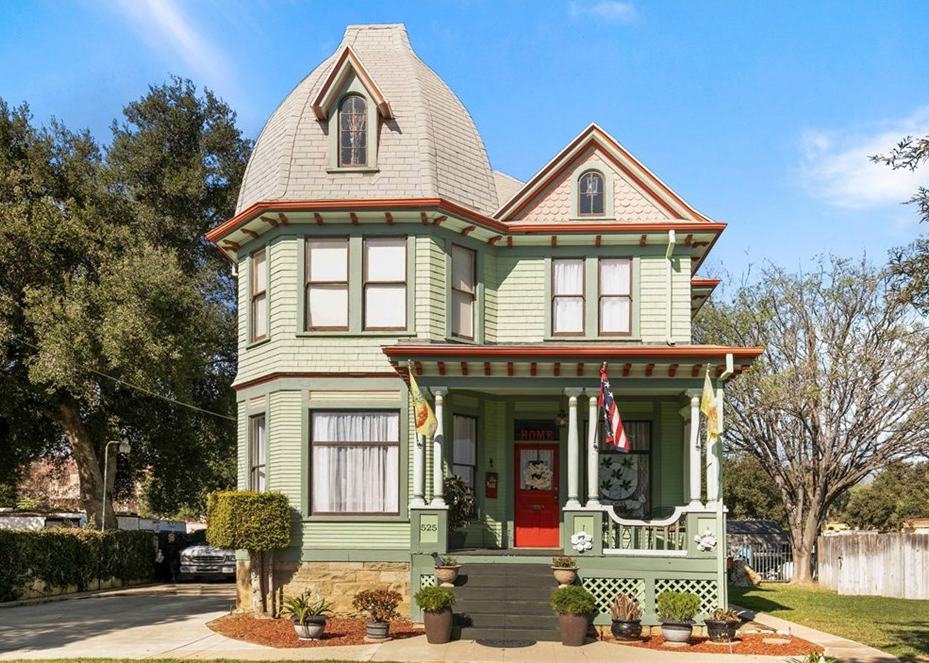
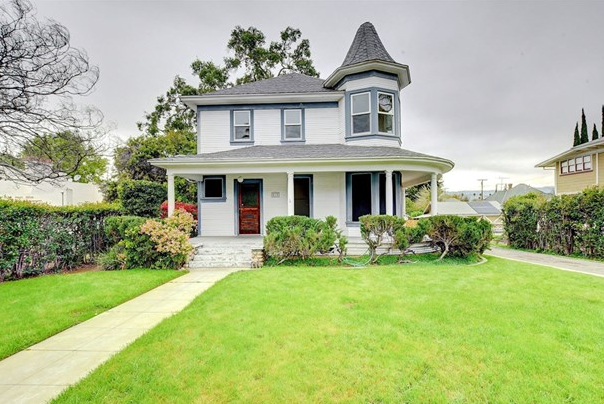

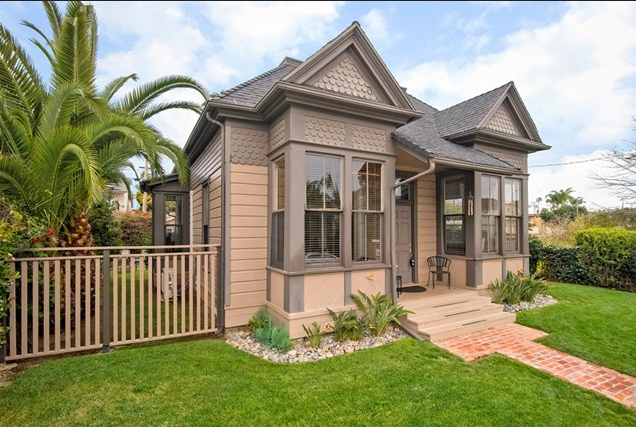

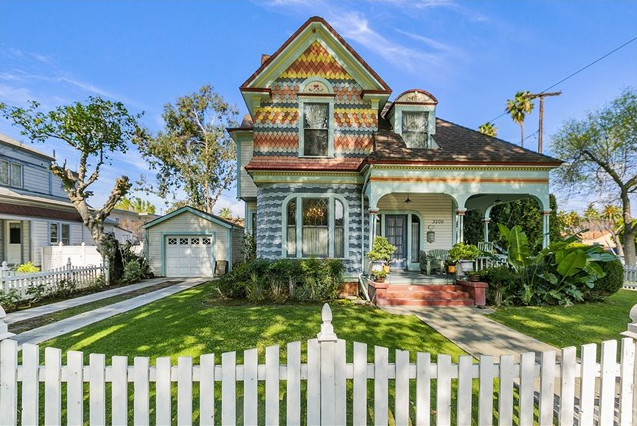
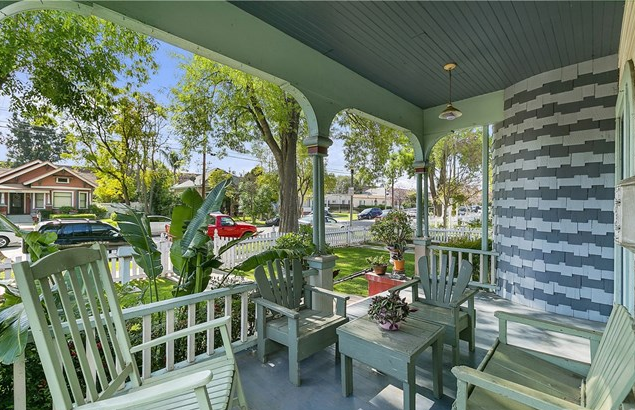
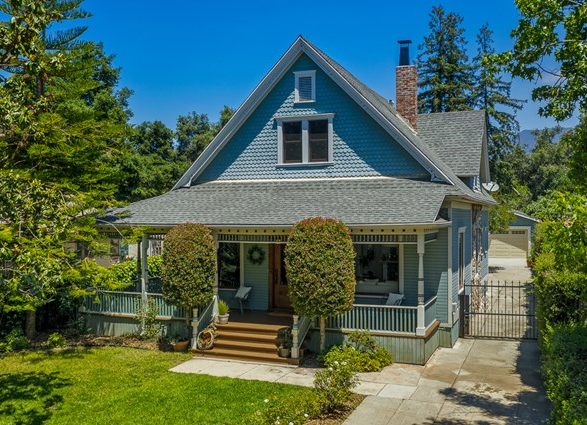
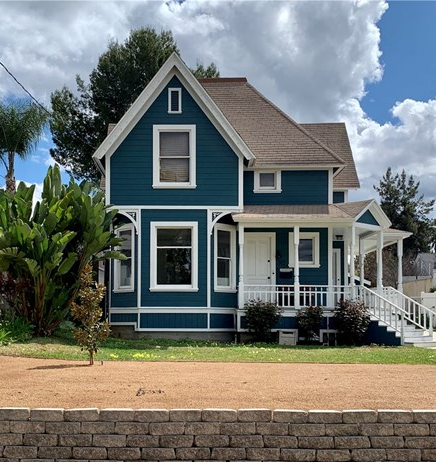
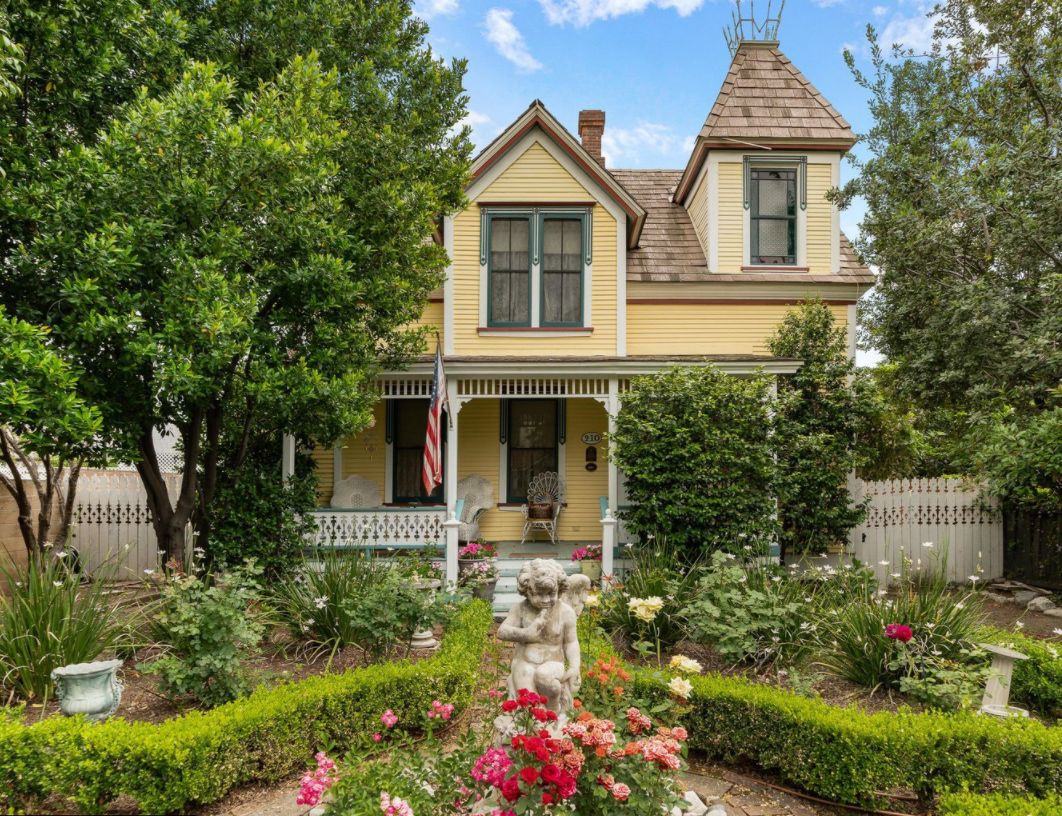

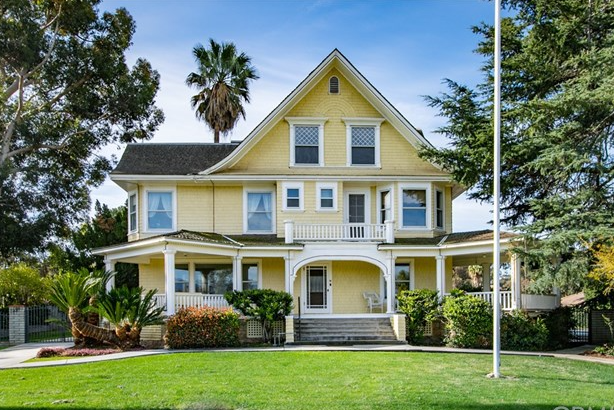

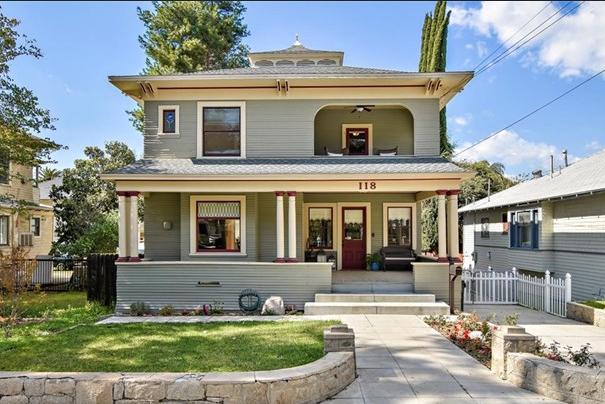
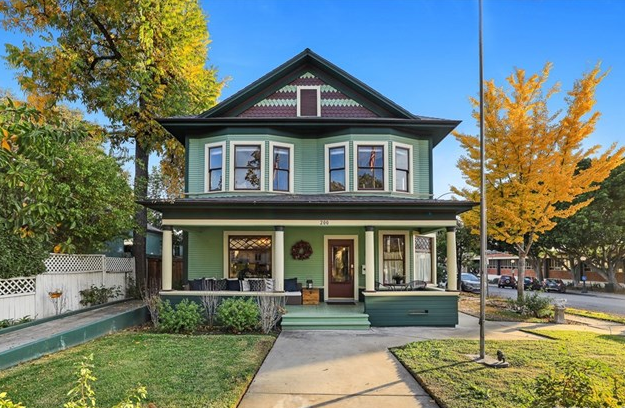
Not Every Victorian is a Queen Anne
When we think of a Victorian most think of a very ornate multi-story home with turrets and spires but in fact, there are a multitude of Victorian styles from this era.
Queen Anne Style is the heavily adorned style with elaborate steep-pitch roof lines, rounded turrets, hexagonal bay window and usually painted in bright pastel colors.
Eastlake Style is more common as these are homes with less complex roof lines but still include a ton of the ornamentation we know Victorians to have.
Unadorned Victorians are premium homes built in the Victorian era but lack all of the ornamentations. These are tougher to find as many have been renovated beyond recognition or torn down because they lack the ornamentation of the previous styles. These are often mistaken for Craftsmans because they generally have a more gentle slope to their roof.
What Are the Elements of a Victorian?
The mechanical systems of an older home are as much a reflection of the time period as the finishes. Victorians pre-date most modern conveniences like air conditioning and electricity however, indoor plumbing was widely available in the 1880’s and most Victorians had water tanks and gas water heaters. Plumbing fixture company American Standard came out with the clawfoot tub in 1883, making it synonymous with Victorian era homes.
Electricity in private residences was also a new concept that took root in the Victorian era but not until the later half of it. Remember the time periods here, Thomas Edison’s lightbulb patent was in 1879, Victorian era homes started being built in 1880, the White House in Washington had electricity installed in 1891. By 1920, only 35% of homes in the US had electricity. While many Victorians were owned by the well-to-do, so we can assume many were early adopters of the technology.
Prior to lighting with electricity, many of these grand homes would have had natural gas-fueled chandeliers and sconces. The current home to Pasadena Heritage, an unadorned Victorian from 1893 still has the gas-fueled sconces in it.
While the mechanicals of this early age are fascinating, what draws the most attention on a Victorian are the ornate details on the exteriors.
There is an unmistakable elegance to roof of a Victorian. They are almost always very steep in roof pitch. Elaborate roof lines that converge in multiple facets with spires and rounded turrets crown the most opulent ones. Hipped roofs or elaborate gable details decorate even the unadorned ones.
The siding of a Victorian is often playful in nature with a combination of wood shapes to separate levels. Shiplaps and clapboard on the lower with scalloped or fish-scale shingles are hints to the creativity and labor intensity involved.
Moldings varying from egg and dart to the clean-cut lines of dentil molding add intensity to eaves and window sills while any banister or railing will be turned into a series of spindles. One could get lost in the details of a Victorian.
What Are the Pros & Cons of Owning a Victorian?
Victorians were a labor of love to create as Pioneers settled their version of the west and as ownership changed hands from steward to steward maintenance was an ongoing task. It is for this reason that Victorians in Southern California are so special. The stars aligned to have saved them from destruction, fire, carelessness, and the all-mighty termite.
Owning one is not for the faint of heart. Keeping 120-year-old wood alive isn’t easy and Victorians, like most Pre-War homes, are 99% wood construction. Foundations are often stacked stone and more than likely need to be needle-pinned to a new foundation. All mechanicals will need to be made current if they haven’t already.
Despite the massive task of upgrading and maintenance, this is not the biggest challenge of owning a Victorian. That challenge lies with the common-sense reality that they should not be modernized. They are so rare and so special that it would be a terrible shame for someone to “open concept” a Victorian. In my humble opinion, Victorians should stay true to what they are or return to their original design. Clusters of small roofs, long hallways, a tucked-away kitchen with sitting rooms for entertaining. This is as close to living in a museum as it gets, and frankly, very few homebuyers are willing to take that on. But for those that do, I applaud you and future generations will as well.
Older Homes Are Recession Proof
In March 2020 the LA Conservancy released a study on the impacts of Historic Preservation in Los Angeles. The study bubbled up some interesting data when it comes to the 35 Historic Preservation Overlay Zones (HPOZ) in LA.
60% of homes in Los Angeles are more than 50 years old (not all are deemed “historic”)
43.8& of construction activity is Rehabilitation (vs 26% in non HPOZ areas)
HPOZs are more racial diverse than non HPOZs
33% of all HPOZ homes take up less than 40% of the lot, therefore allowing for ADU expansion.
Renovations in HPOZ cost less than non-HPOZs
The growth in Price per Square Foot of an HPOZ house has outpaced non-HPOZ
When it comes to investing in real estate, one of the best ways to beat the natural ups and downs of the market is through renovation. Older homes offer ample opportunity for an owner to dramatically improve the value of their investment. This is why flippers do what they do and make so much money at it. They key to historic renovation is to be sympathetic to the period. This is a delicate balance but is very possible and stunning when done properly.
If you have any questions about owning or selling an older home in Silverlake, Los Feliz, Hollywood Hills, Pasadena, Altadena, Highland Park, Mt Washington, etc, please feel free to contact using the details below. I’m always available to offer insight and guidance.
If you’re interested in other Revival Architectural Styles, here are links to the rest of the series:
Show Me The Victorians
To see more Victorian homes for sale in Los Angeles, below is a custom Compass Collection of these homes in the areas I work in. Some are for sale, some have been sold. If you are in the market to sell or own one of these properties, I can be contacted below.
Compass Collection: LA Area Craftsman Homes
Looking to Buy or Sell a Pre-War Home? Fill out the form for a free consultation.
Michael Robleto
REALTOR®-Compass Real Estate
213-595-4720
Michael Robleto is a Los Angeles based REALTOR® that specializes in Historic Pre-War residential properties and those with architectural merit. Michael uses his vast knowledge of historic homes, residential construction and modern day marketing to predict and solve the many problems that arise in real estate transactions. His client accolades of insight, prompt communication, integrity and hard work support the fact that he is not your average agent.
Michael leverages his personal passion for historic architecture to provide his clients the unknown insight on the pros and cons of older homes. Michael, the son of a contractor, a California native, grew up in an older Bungalow home and has spent 23 years in Southern California admiring the unique architecture of the region. Michael brings 20+ years of negotiation and sales experience to his seven year career in residential real estate. He often writes on homeownership strategy, historic residential architecture and related topics which can be found on Facebook, YouTube, Twitter and Instagram under the common profile name of his blog; BungalowAgent or at www.BunaglowAgent.com/blog.
Michael sits on the Board of Directors of Pasadena Heritage and is a frequent volunteer for the preservation efforts of various preservation groups and the LA Conservancy. When not working you can find Michael on hiking trails statewide with his faithful German Shepherd Axel.

